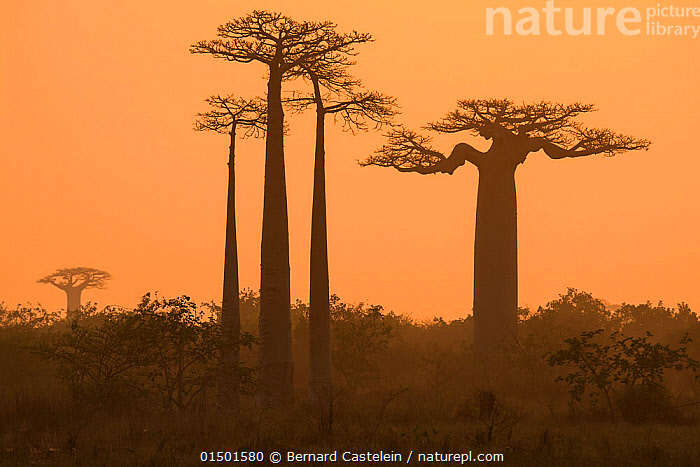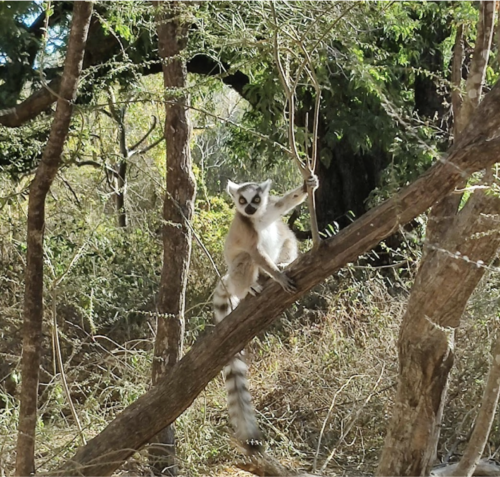Madagascar's Endemic Flora: An Ecotourism Perspective

Landing in Antananarivo on a humid afternoon was a sensory explosion. The heat pressed down like a thick blanket, saturated with the diesel fumes of brightly painted taxis and the intoxicating aroma of roasting peanuts from street vendors. A chorus of Malagasy voices swirled around me, a linguistic symphony I was only beginning to understand. My initial anxieties about sampling street food – especially the mysterious koba akondro, a local sweet made with peanuts, bananas, and rice flour – quickly dissipated as I watched locals enjoying it with gusto. Under the warm, golden light of the setting sun reflecting off the corrugated iron roofs, I took my first bite and was instantly transported. It was sweet, nutty, and utterly delicious, a perfect introduction to the vibrant flavors of Madagascar. As a botanist specializing in endemic plant life, I was here for a month-long research trip, eager to study the impact of ecotourism on the island's unique flora amidst increasing development pressures. But I quickly learned that understanding Madagascar’s plants meant understanding its people and culture too.
Armed with my Sony Alpha 7R IV and a 24-70mm f/2.8 GM lens, I was ready to document everything. And my trip, facilitated by Vistalocation.com, was about to begin!
The Felimare Lemur Festival: A Cultural Tapestry Woven with Nature
My travels took me to a small village near Andasibe, where I had the incredible opportunity to witness the Felimare lemur festival. The village throbbed with life, a vibrant spectacle of color and sound. People adorned in elaborate costumes, mimicking the patterns and movements of the various lemur species, danced to the rhythmic drumming that echoed through the rainforest. As dusk settled, flickering torches illuminated the sacred dances performed under the pale light of the full moon. The Felimare lemur festival is an integral part of the local culture and lemur population, celebrating the deep bond between humans and these unique primates. It was a powerful reminder of the importance of preserving both the natural world and the cultural traditions that depend on it. These traditions highlight the need to support ethical travel Madagascar in ways that respect and preserve the culture of the Malagasy people.
Night Walk in Andasibe: Seeking the Aye-Aye
That same evening, I embarked on a guided nocturnal walk in Andasibe National Park. The oppressive humidity clung to me like a second skin as we ventured into the darkness. The thick, black velvet sky was pierced only by the calls of unseen creatures – the chirps of insects, the croaks of frogs, and the occasional haunting cry of a nocturnal bird. Suddenly, our guide stopped and pointed. There, in the shadows, were two red pinpricks of light – the eyes of an aye-aye, one of Madagascar’s most elusive and bizarre lemurs. It peered at us cautiously before disappearing back into the undergrowth. It was a truly unforgettable experience, a glimpse into the hidden world of Madagascar's nocturnal wildlife. Seeing these creatures in their natural habitat reinforced my commitment to promoting sustainable tourism Madagascar and minimizing our impact on their fragile ecosystem.
Tsingy de Bemaraha: Walking on Ancient Coral
The journey to Tsingy de Bemaraha National Park was long and arduous, but the destination was worth every bump and jolt. This UNESCO World Heritage site is a geological marvel, a landscape of dramatic limestone karsts sculpted by centuries of erosion. Under the harsh midday sun, the sharp, angular shadows cast across the Tsingy created an otherworldly atmosphere. Walking on the razor-sharp rocks felt like walking on ancient coral, a tangible connection to the island's geological past.

Despite the seemingly unforgiving terrain, life thrives here. I was particularly fascinated by the Pachypodium rosulatum, or elephant's foot, an endemic plant Madagascar species that clings to life in the cracks and crevices of the limestone. Its swollen trunk stores water, allowing it to survive the harsh dry season. Just as I was starting to feel the effects of the heat, a brief, intense rainfall swept across the landscape, washing the dust from the air and revealing the crystal clarity of the sky.
Kayaking Through Masoala's Mangrove Tunnels
Leaving the stone forests behind, I headed east to Masoala National Park, home to the largest remaining tract of rainforest in Madagascar. One of the highlights of my time there was kayaking through the mangrove tunnels during the golden hour. The still, brackish water reflected the tangled roots of the mangroves, creating a mesmerizing mirror image. The air was thick with the smell of decaying vegetation, a testament to the vital role these ecosystems play in nutrient cycling. Unseen birds called from within the dense canopy, their voices echoing through the tranquil waterways. Sunlight filtered through the leaves, dappling the water with shimmering patterns of light and shadow. The park has plenty of wildlife and would be a wonderful spot for Madagascar wildlife photography.
Ranomafana: Lemur Conservation in Action
My next stop was Ranomafana National Park, where I had the opportunity to observe lemur conservation efforts firsthand. The park is home to several lemur species, including the critically endangered golden bamboo lemur. I spoke with a local researcher about the challenges of balancing tourism with habitat preservation. "It's a constant struggle," she explained. "Tourism brings much-needed revenue to the community, but it also puts pressure on the lemur populations and their habitat. We need to find a way to make tourism sustainable, so that it benefits both the people and the environment."
One of the strategies they employ is community-based ecotourism, where local communities are involved in managing and benefiting from tourism activities. This not only provides them with an economic incentive to protect the forest but also empowers them to become stewards of their own natural resources. This is one way for how to support local communities in Madagascar tourism.
Fresh Seafood in Fort Dauphin
After days spent hiking and exploring, I rewarded myself with some fresh seafood in Fort Dauphin. Grilled lobster, cooked over open flames on the beach, was the perfect way to end the day. The sound of crashing waves and the starlit sky provided a magical backdrop to a truly memorable meal.

The Spiny Forests and Whale Watching
My journey ended in the spiny forests of southern Madagascar, a landscape unlike any other I had ever seen. At dawn, the silhouette of baobab trees against the rising sun created an otherworldly scene. The endemic plants Madagascar species here are uniquely adapted to the arid environment. The Alluaudia procera, also known as the Madagascar ocotillo, is a prime example. Its spiny stems and small leaves help to minimize water loss in the harsh desert climate.
Whale Watching off Île Sainte-Marie
From the spiny forests, I travelled to Île Sainte-Marie, a small island off the east coast. Here, I experienced the awe-inspiring sight of humpback whales breaching under a soft, overcast sky. It was a powerful reminder of the incredible biodiversity that Madagascar has to offer, both on land and in the sea. Responsible Île Sainte-Marie whale watching tours are available and encourage the preservation of these gentle giants.
Reflections on Ethical Ecotourism
My month in Madagascar was an unforgettable journey, a testament to the island's unique beauty and fragility. As development pressures increase, it is more important than ever to promote ethical and responsible tourism. By supporting local communities, minimizing our environmental impact, and choosing tour operators committed to sustainable practices, we can help ensure that Madagascar's natural wonders are preserved for future generations. We need to respect local customs and learn the local language to improve relationships. Choosing ethical tour operators Madagascar reviews can help tourists choose businesses that support the local communities. Madagascar is a treasure trove of biodiversity, a place where the wonders of nature and culture intertwine. It is our responsibility to protect it. Now is the time to plan your Madagascar botanical tour!